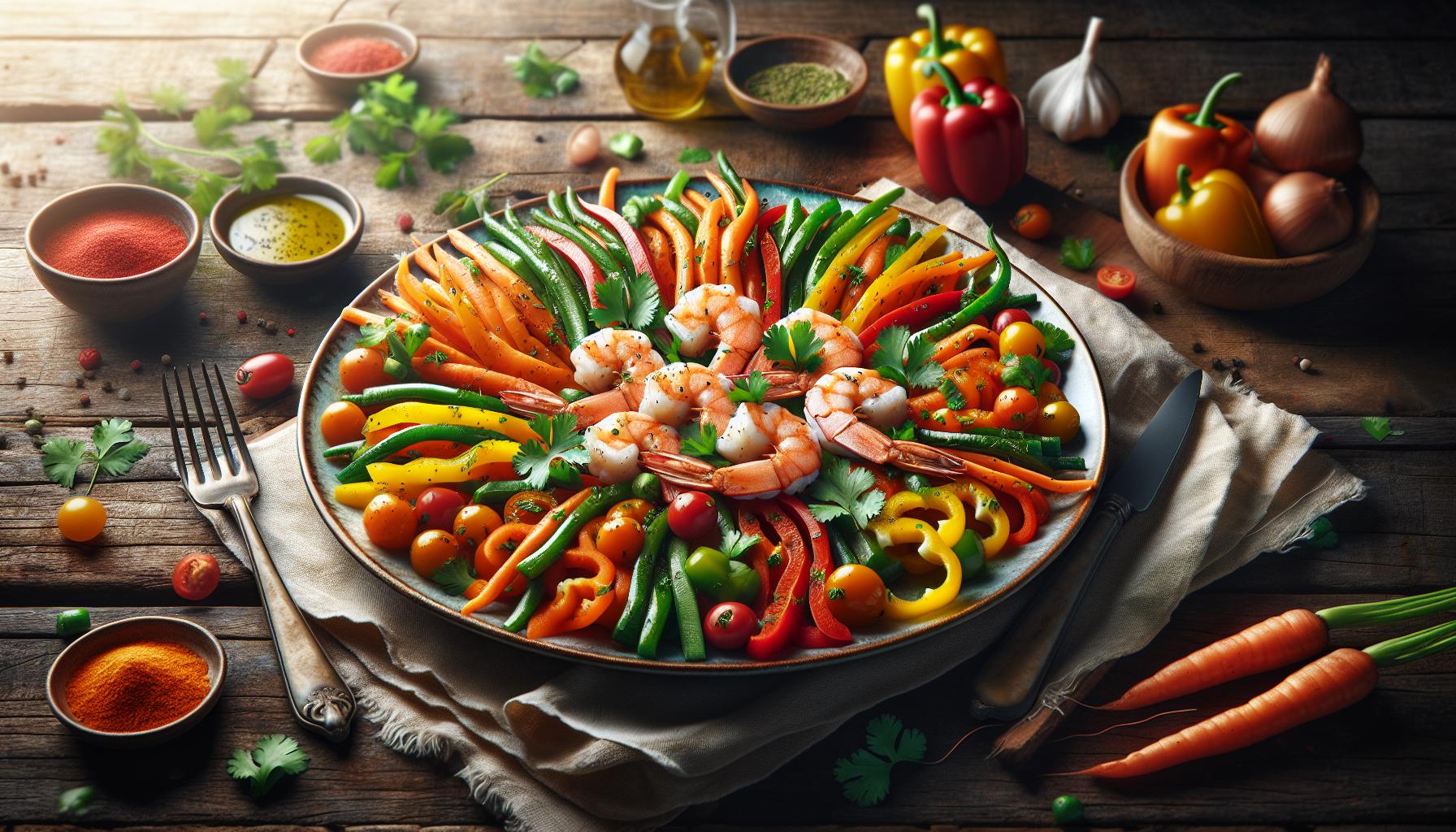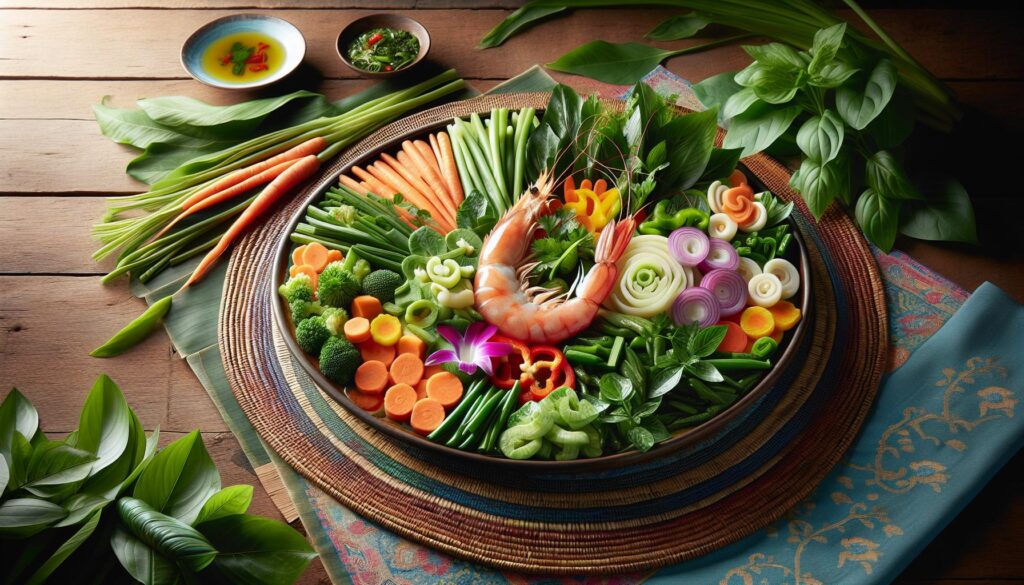Porbeub, a lesser-known yet fascinating dish, has been captivating food enthusiasts around the globe. Originating from the vibrant culinary traditions of Southeast Asia, it combines an array of flavors and textures that showcase the region’s rich gastronomic heritage. This unique dish often features a medley of fresh ingredients, making it a delightful experience for the palate.
As food culture continues to evolve, porbeub is gaining recognition for its versatility and health benefits. Whether served as a main course or a flavorful side, it offers a delightful balance of taste and nutrition. Exploring porbeub not only introduces diners to new flavors but also connects them to the cultural stories behind each ingredient. Dive into the world of porbeub and discover why this dish deserves a spot on every food lover’s table.
Porbeub
Porbeub represents a unique dish within Southeast Asian cuisine, celebrated for its rich flavors and diverse textures. This dish often combines an array of ingredients, such as fresh vegetables, herbs, and proteins, creating balanced and vibrant meals. Its origins trace back to various cultural influences within the region, making it a reflection of local traditions and practices.
Porbeub boasts versatility, suitable as both a main course and a side dish. This adaptability appeals to a wide range of culinary preferences. Additionally, it emphasizes health benefits, as many ingredients provide essential nutrients, promoting overall well-being.
The preparation of porbeub varies, featuring different cooking techniques that enhance its taste. Steaming and stir-frying are common methods, allowing the natural flavors to shine through. The dish’s cultural background adds depth, inviting food enthusiasts to appreciate not just the meal itself but also the stories it tells about the people and places involved in its creation.
Exploring porbeub offers an opportunity to experience a taste of Southeast Asia that harmonizes tradition and innovation, making it a worthy addition to any food lover’s repertoire.
History and Cultural Significance

Porbeub holds a special place in Southeast Asian culinary history. This dish reflects the region’s rich traditions and cultural diversity, showcasing the unique ingredients and cooking styles of various communities.
Origin of Porbeub
Porbeub originated in Southeast Asia, with roots tracing back to local agricultural practices. Traditional recipes utilize fresh produce, herbs, and proteins indigenous to the region. The balance of flavors and textures highlights the influence of neighboring countries, such as Vietnam and Thailand. Its name often reflects local languages, emphasizing the dish’s connection to the cultural identity of the communities that celebrate it.
Evolution Over Time
Porbeub has evolved significantly over the decades, adapting to changing culinary trends and tastes. As globalization introduced new ingredients and cooking techniques, chefs began experimenting with flavors and presentation. Modern interpretations incorporate fusion elements while maintaining traditional methods like steaming and stir-frying. This evolution illustrates porbeub’s ability to blend cultural heritage with contemporary cuisine, appealing to a broader audience while honoring its origins.
Characteristics of Porbeub

Porbeub showcases a rich combination of fresh ingredients and diverse preparation techniques. Its appeal lies in the balance of flavors, textures, and cultural significance across various regions.
Ingredients and Preparation
Porbeub typically features a blend of fresh vegetables, herbs, and proteins. Common vegetables include carrots, bell peppers, and leafy greens. Proteins often consist of shrimp, chicken, or tofu, providing options for various dietary needs. Herbs, such as cilantro and mint, enhance the dish’s flavor profile.
Preparation methods for porbeub vary widely. Steaming is a popular technique, preserving the natural taste and nutrients of the ingredients. Stir-frying also serves to highlight the dish’s vibrant colors and flavors. Chefs often emphasize freshness by using seasonal produce, ensuring that each serving reflects local agricultural practices.
Variations and Regional Differences
Regional variations of porbeub arise from local ingredients and culinary traditions. In Vietnam, porbeub may feature rice noodles and unique spices, while Thai versions might incorporate coconut milk and lemongrass. Each region adapts the dish to local palates, enhancing its versatility.
In addition, preparation styles shift based on cultural practices. Some communities favor grilled preparations, while others may use hot pots to serve the dish. This diversity underscores porbeub’s ability to connect various culinary heritages, offering a unique experience whether enjoyed in a busy street market or a home kitchen.
Health Benefits of Porbeub

Porbeub offers various health benefits, attributed to its diverse ingredients and preparation methods. This dish serves as a nutrient-dense option that supports overall well-being.
Nutritional Value
Porbeub is rich in vitamins, minerals, and antioxidants. Common ingredients include:
- Vegetables: Carrots, bell peppers, and leafy greens provide vitamins A, C, and K, and supplies essential fibers.
- Proteins: Shrimp, chicken, or tofu contribute high-quality proteins, supporting muscle growth and repair.
- Herbs: Fresh herbs enhance flavor while adding antioxidants and anti-inflammatory properties.
- Complex Carbohydrates: Ingredients like rice noodles offer sustained energy, benefiting active lifestyles.
Each component contributes to a balanced diet, making porbeub suitable for various dietary needs.
Potential Benefits for Wellness
Porbeub promotes wellness through its healthful ingredients.
- Weight Management: The low-calorie and high-fiber content help in maintaining a healthy weight, promoting satiety.
- Digestive Health: The fiber from fresh vegetables aids digestion, supporting gut health.
- Heart Health: Ingredients like shrimp and leafy greens support cardiovascular health by providing omega-3 fatty acids and reducing bad cholesterol levels.
- Immune Support: The antioxidants found in vegetables and herbs boost the immune system, combating illnesses.
Incorporating porbeub into a diet can enhance health while providing a flavorful culinary experience.
Porbeub stands out as a vibrant dish that beautifully marries tradition with modern culinary trends. Its rich flavors and health benefits make it a delightful addition to any meal, appealing to a wide range of palates. As food enthusiasts continue to seek authentic experiences, porbeub’s versatility and cultural significance ensure it will capture attention in kitchens and restaurants alike. Embracing this dish not only enhances culinary adventures but also honors the rich heritage of Southeast Asia. Whether enjoyed in its traditional form or with a modern twist, porbeub invites everyone to savor its unique story and flavors.

